I am always on the look out for ways to make my instruments and network more reliable and future-proof on Grace. One of the last instruments left that I hadn’t addressed was the Raymarine ST60 wind display. A while ago I came across the Raymarine ITC-5, which does not seem to have been marketed much as a solution to help with older instruments and newer networks. It seemed perfect to help increase the quality of my network while replacing some old pieces.
Grace came with Raymarine ST60 series wind and depth instruments which use the rather old Raymarine SeaTalk1 protocol. My original solution to bringing this data onto my NMEA 2000 network was to use a SeaTalk1 to SeaTalkNG converter (scroll down a bit) connected to a SeaTalkNG network, which was also cross connected to the rest of the NMEA 2000 network. I eventually replaced the dual thru-hull depth sensors with a single Maretron DST110, which is native NMEA 2000. That left the wind instrument at the top of the mast, and the ST60 wind display.
For more details on my network, please see the most up-to-date diagram here.
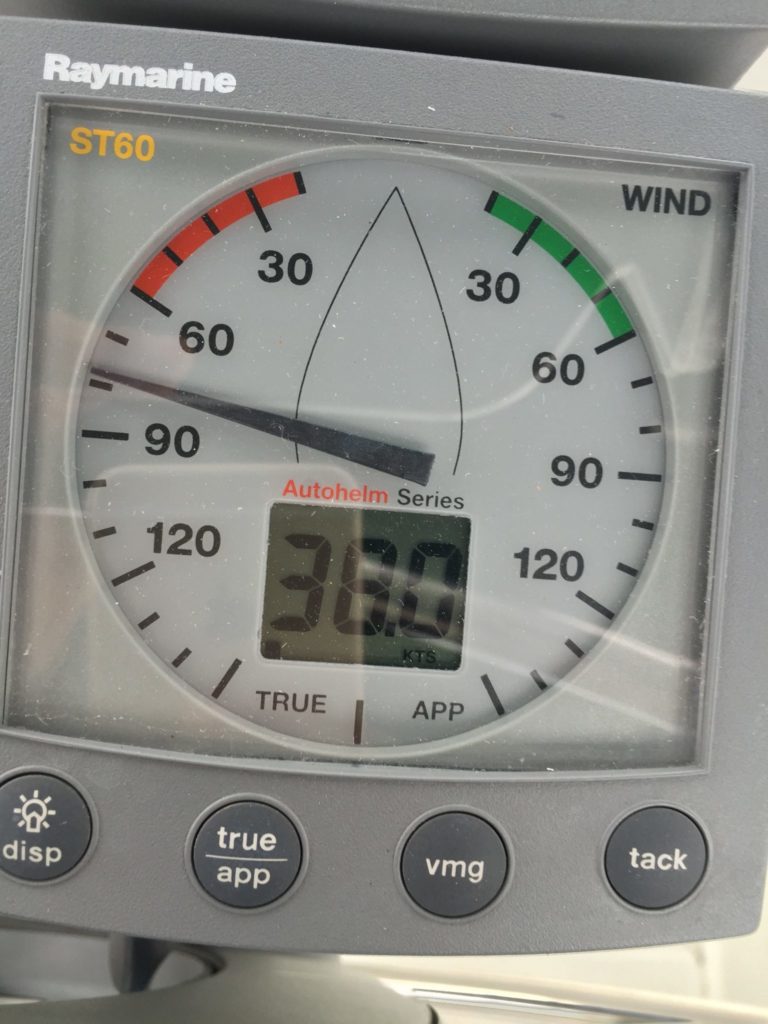
When I added the i70s displays recently, I simply took the ST60+ display part and hid it under the steering station. This worked for a while until it came unplugged at a rather inconvenient time, so I decided to install the ITC-5, which I had purchased a year or so ago.
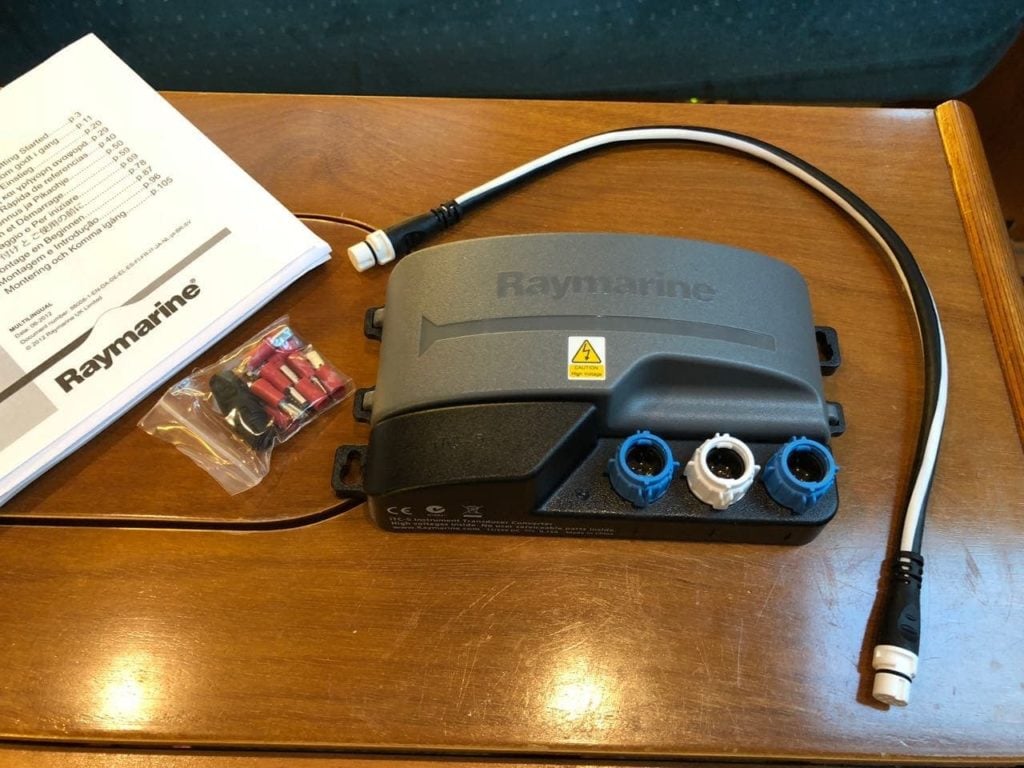
The main unit is a beefy piece of plastic and comes with a SeaTalkNG cable, packet of connectors and screws, and a manual. I planned on removing the SeaTalk1 to SeaTalkNG converter, which was being used only for the ST60, and replace it with this, so the SeaTalkNG device port (the white one) would work perfectly.
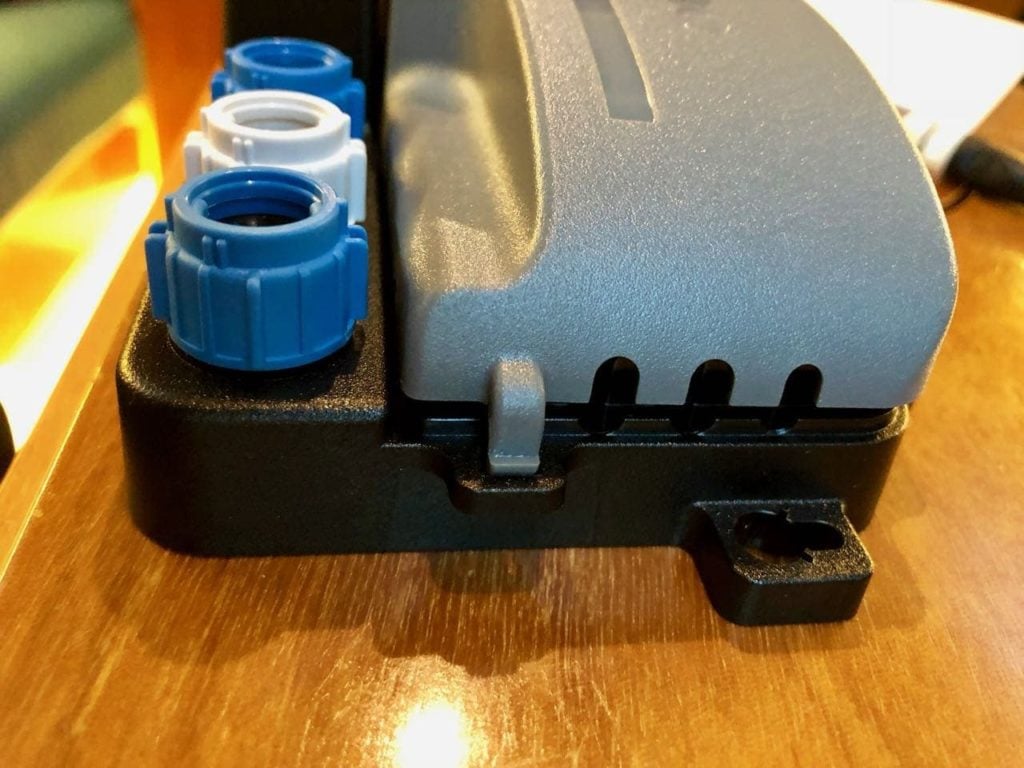
One of the main reasons for installing this was to prevent the cables from coming unplugged from the back of the ST60. The ITC-5 has a very secure cover with clips, and a screw to keep it in place, as well as passthroughs for the wires coming in either side.
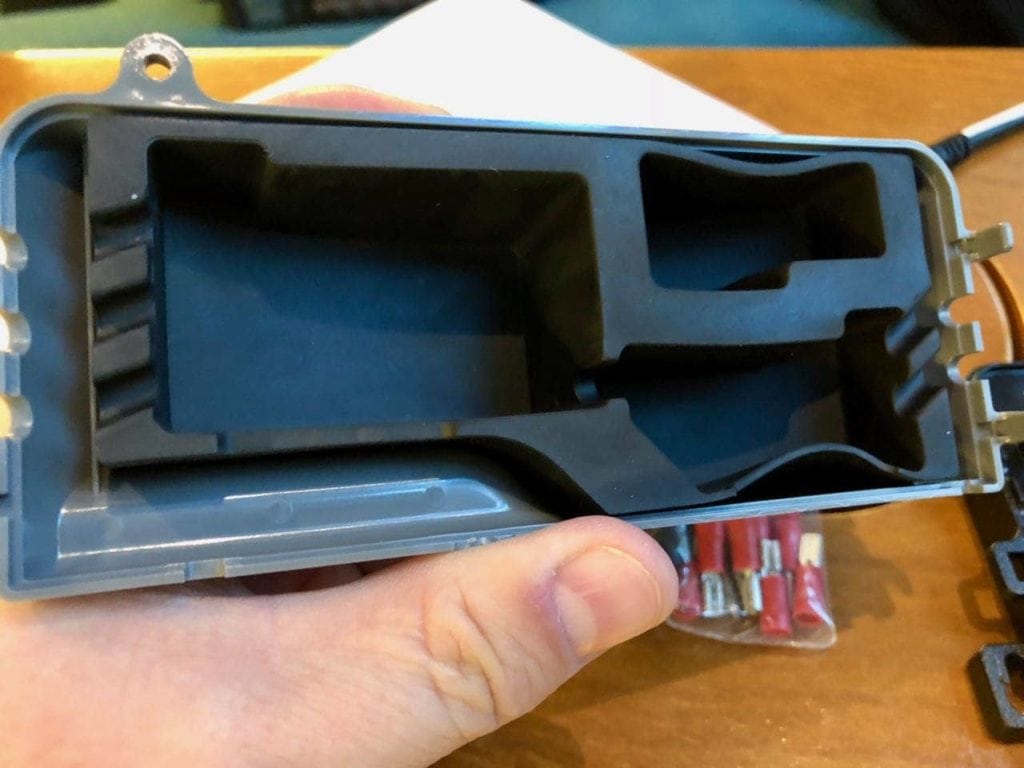
The front cover has a great big rubber gasket and angled entry points to help retain the wires as much as possible.
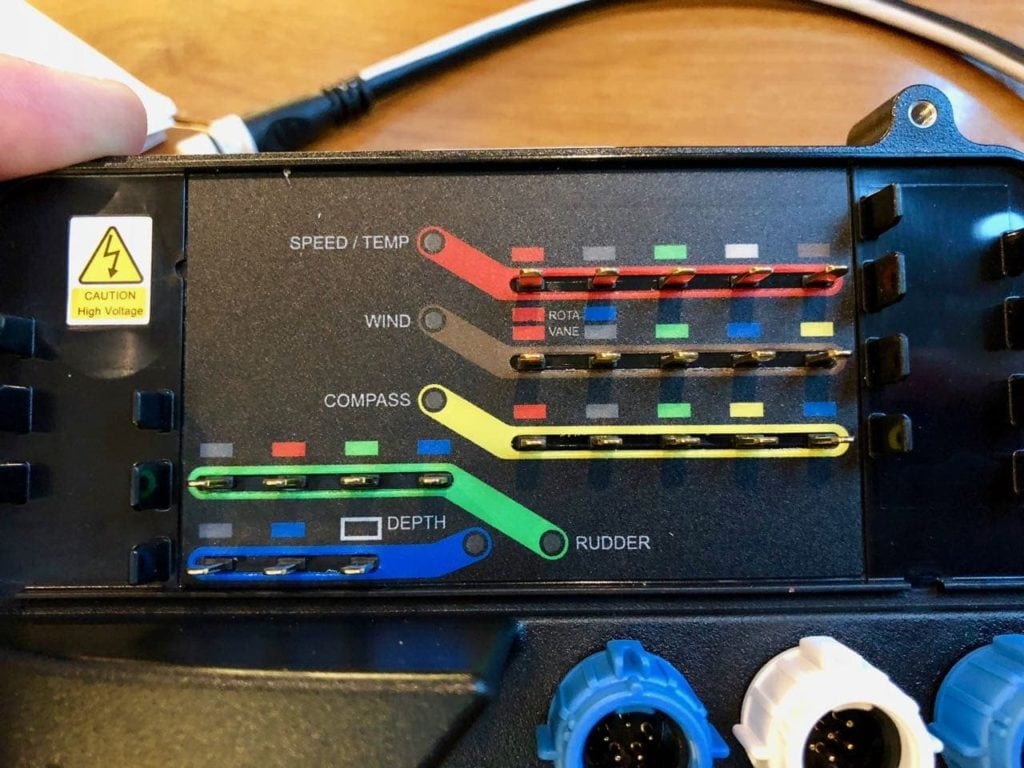
The main part of the unit has copper connectors that are clearly labeled and ready for connectors for Speed/Temp, Wind, Compass, Rudder, and Depth. There are several ways to connect Wind instruments depending on the model and type.
Each bank has a light which will indicate successful data transfer and connection. The unit itself has status lights similar to the SeaTalk1 converter right near the SeaTalkNG connector cable, and outside the cover so you can quickly see if data is flowing and power is on.
For my particular situation, I was only going to be using the Wind part. I removed the original ST60 and clipped off the older connectors. Using the ones included with the ITC-5, I put brand new connectors on each wire, and then began the contortions to get the unit in place.
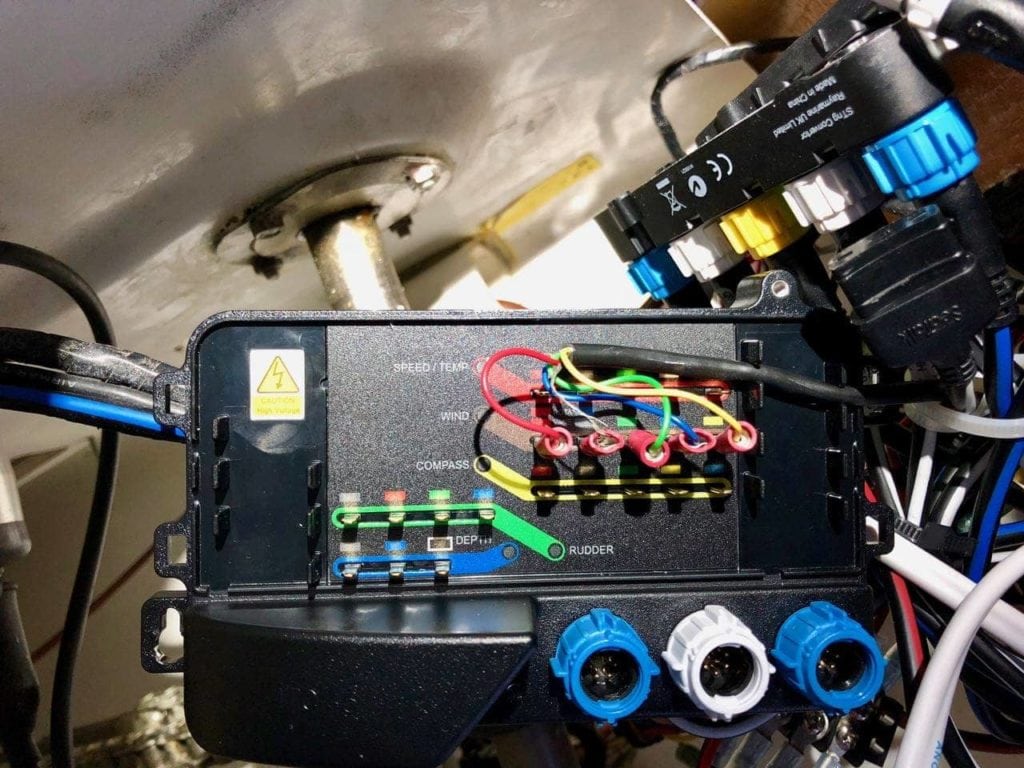
In the photo above, I was testing the system and used the old connectors. You can also see the SeaTalk1 to SeaTalkNG converter in the upper right.
The install was pretty straightforwards. I didn’t have to configure anything on the ITC-5, simply plug in the connectors, put the cover on and route the cables, clip it shut, put the screw in, and done. The cable is tightly held by the rubber, and there is little chance the connectors will come undone again.
On my i70s I was able to choose to calibrate the ITC-5 wind settings by pointing the boat into the wind. No other adjustments were required. The wind data was showing up on the network perfectly.
I eventually plan on replacing the instrument at the top of the mast, but I have not found a good solution just yet. On Jammy I had a Maretron WSO100 ultrasonic sensor, but it was quite an ordeal to find space at the top of the mast for it. Other manufacturers have interesting concepts, but the most reliable seem to be similar to what I already have, but with NMEA 2000 cabling.
The ITC-5 allows me to get a bit more life out of the existing one with a much more reliable connection.

